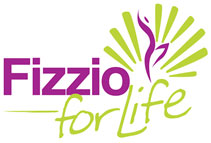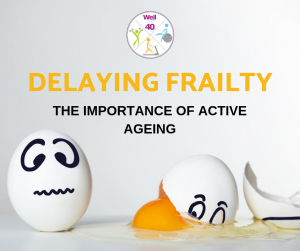Our ageing population means that more Australians are at risk of becoming frail than ever before. In 2015-16 more than 18700 people in Australia sustained a hip fracture. Research from the University of Melbourne reports that an alarming one in three people over the age of 50 will die within 12 months of suffering a hip fracture. And an even more scary statistic is that older adults have a five-eight fold risk of death within 3 months (1).
Most articles talk about the toll that inactivity will have on our economy, the strain to our health system and the unfair burden to tax payers. That’s because many of those that survive a hip fracture are unable to return to independent living and need to be relocated to an aged care facility. However, there is a significant impact at a micro level as well, such the toll on family and friends who support someone with a hip fracture over their long-term recovery, and the personal economic cost.
What is Frailty?
We all know about the role of bone health, osteoporosis in particular, and bone fractures. However did you know that it’s not just bone health that’s an important factor in frailty? When assessing for frailty, health professionals look at physical performance, stamina, nutrition, cognition and mental health as well as risk factors around the patient such as poor mobility, reduced strength, and falls risk.
Muscle health in particular is a major risk factor in health outcomes. Muscles are extremely important to the function of our body. Besides supporting our skeleton, healthy muscle pumps blood around our body, helps us breath, helps regulate our blood sugar, and provide amino acids that are vital to our body’s function and the prevention of many diseases and illnesses. If we don’t exercise our muscles decline at a rate of 1-2% per year (2). There has also been research indicating a link between declining muscle strength and the onset of Alzheimers Disease and cognitive decline (3).
Is Frailty reversible?
The good news is that the most recent research on frailty shows that the process can be delayed or reversed, at low expense both personally and economically and in many cases without, or as an adjunct to, medication. In fact, the research showed that a combination of muscle strength training in conjunction with a protein supplementation was ‘consistently placed highest for effectiveness and ease of implementation’ (4).
Exercise in particular, both cardiac and resistance/muscle training, have also been shown to have positive benefits on other factors included in assessments of frailty – cognition, sarcopenia (muscle loss), management of chronic disease, bone strength etc.
The evidence is overwhelming for the benefits of exercise. But for most of us, these revelations are only fairly new. It wasn’t until the 80s and the advent of aerobics that exercise became more commonplace and mainstream. So we haven’t included exercise as part of our daily regime and many of us find gyms daunting. Sure we may walk a bit and think that that is being ‘active’ enough, (and it’s a good start), but it isn’t necessarily the only kind of exercise that our body needs.
Where do I start?
1: If you haven’t exercised before, you should start by seeing your GP.
Get a check up, and make sure that it is safe for you to start exercising.
2: Find an exercise professional.
The right professionals for someone older who wants to exercise is an allied health professional such as a physiotherapist or an exercise physiologist. They are uniquely placed through their university qualifications to provide safe exercise prescription to people with chronic disease, illness and ageing.
3: Find somewhere where you are safe and comfortable.
The best place to exercise is somewhere where you are safe and comfortable, with appropriate equipment and care.
4: Find somewhere fun and supportive!
You should find somewhere that incorporates fun and promotes a sense of community and social inclusion where you are exercising with your peers.
5: Actively try and change your internal narrative about exercise.
Exercise isn’t scary – that perception comes from inappropriate and outdated information about what it is, how it should be done, and how people should be motivated. Try and change your narrative to something positive – having great function, strength, active living, functional movement, being able to keep doing the things you love, being social.
Move more, and in more appropriate ways for your health. Your body will thank you by serving you well and ensuring that you maintain your independence and strength and don’t become a statistic.
If you would like any advice or information on active ageing, our Active Ageing studio Well Over 40, our programs or how our team can help, please call our office on 38053223.
(1) Brennan-Olsen, S. 2018 ‘Why hip fractures in the elderly are often a death sentence’ The Conversation, http://theconversation.com/why-hip-fractures-in-the-elderly-are-often-a-death-sentence-95784
(2) Wolf, RJ. ‘The Underappreciated Role of Muscle in Health and Disease’ The American Journal of Clinical Nutrition), 2006, 84(3), pp475-482.
(3) Boyle et al. ‘Association of Muscle Strength with the Risk of Alzheimers Disease and the Rate of Cognitive Decline in Community-Dwelling Older Persons’,
(4) Travers et al. ‘Delaying and Reversing Frailty: a systematic review’ British Journal of General Practice, 2019, 69(8) pp61-69.


